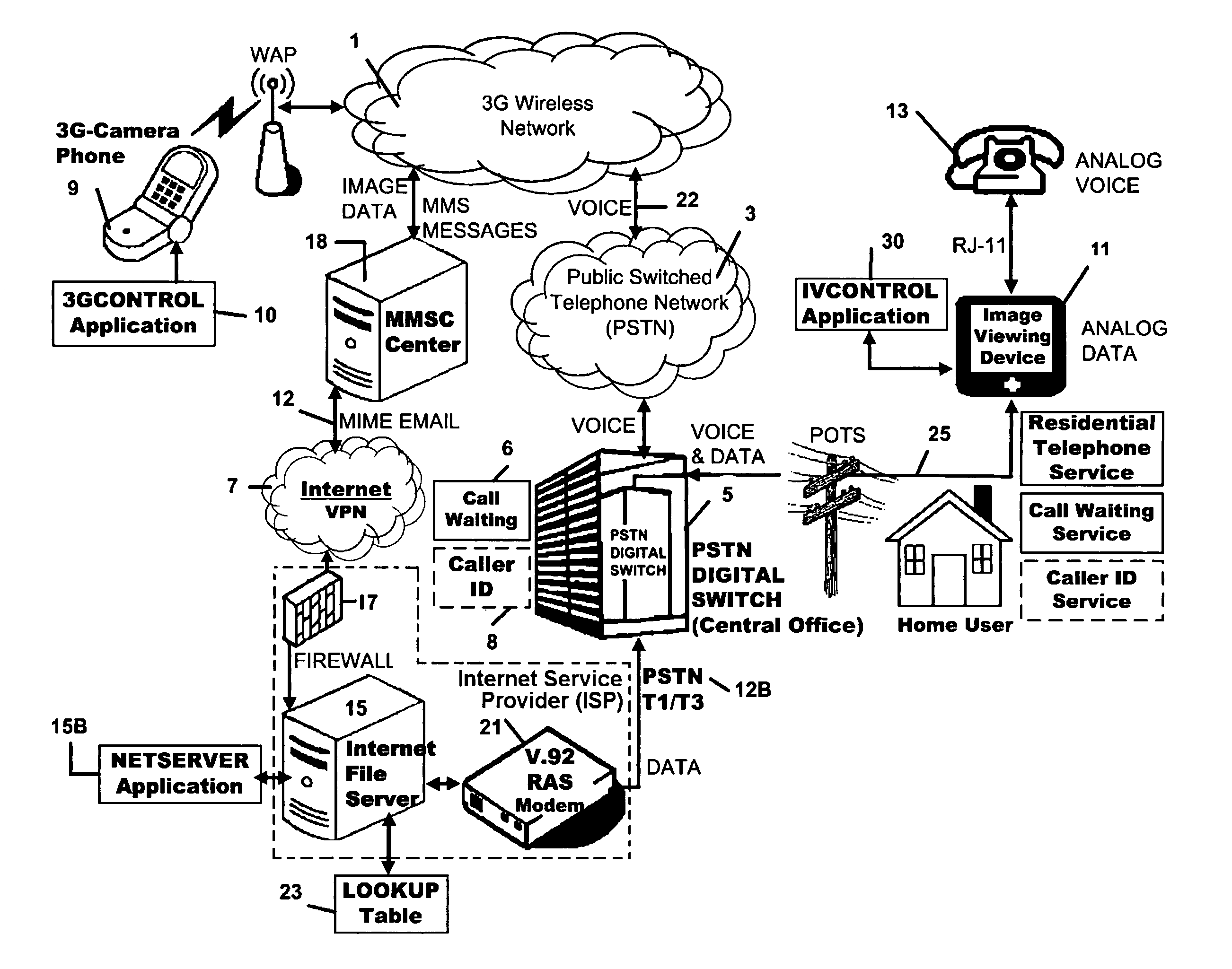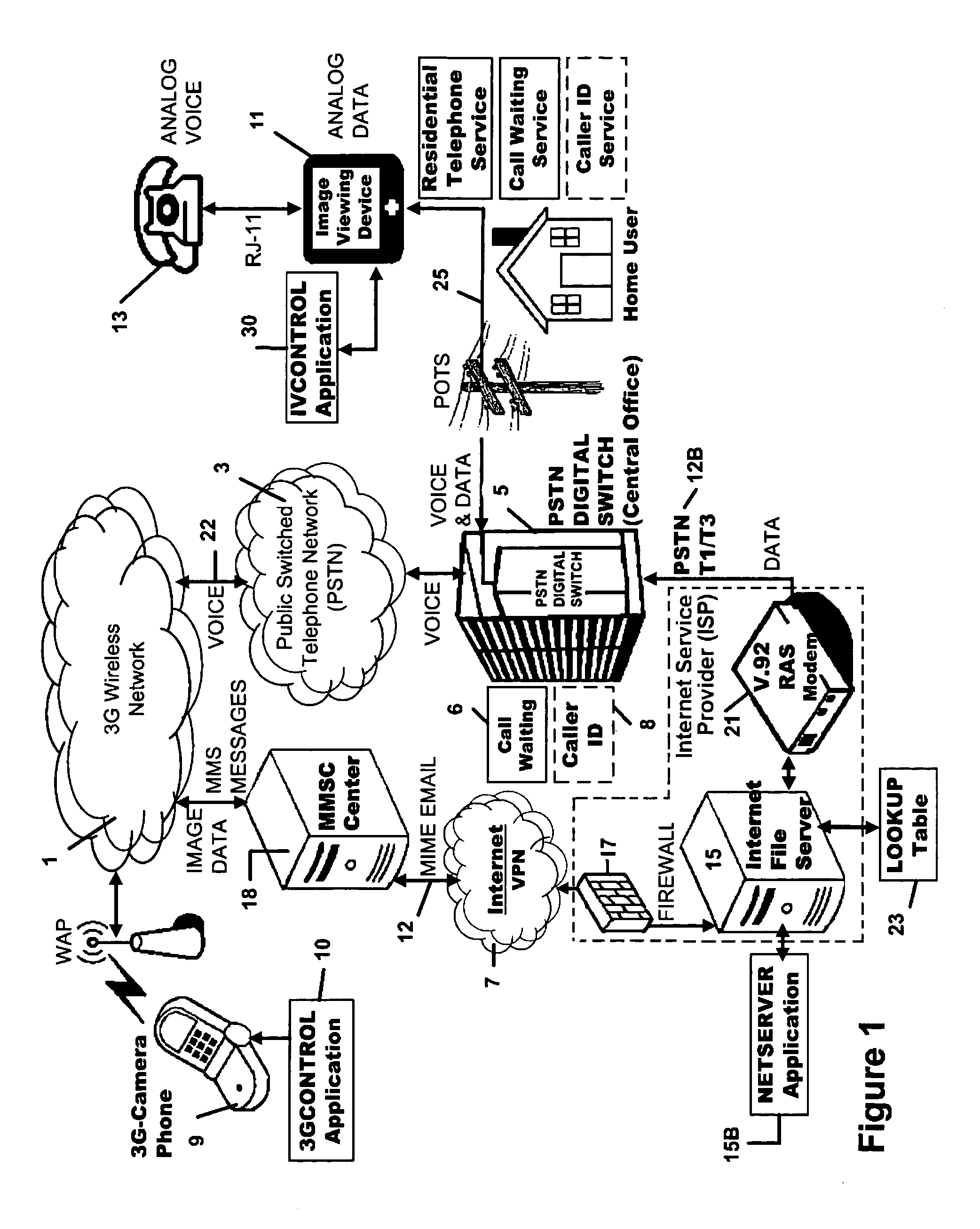Picture transmission and display between wireless and wireline telephone systems
a wireless and wireline telephone system technology, applied in the field of transmission of bitmap photographic images, can solve the problems of not supporting devices such as fax machines or v.90/v, cannot send or receive bitmap images as well as other types of binary files, and achieve the effect of wide application
- Summary
- Abstract
- Description
- Claims
- Application Information
AI Technical Summary
Benefits of technology
Problems solved by technology
Method used
Image
Examples
Embodiment Construction
[0077] Turning to the drawings, in which like reference characters denote like elements throughout the several views, FIG. 1 to which reference is made is a block diagram of an embodiment of the image transmission system of the invention in the environment of existing communications networks, particularly, a wireless service or network 1, represented by the cloud symbol, the public switched telephone network (“PSTN”), represented by another cloud symbol, which network encompasses the long distance carrier and the associated local central office 5, and the Internet (network) 7, represented by a third cloud symbol. Those networks are conveniently accessible to one another or, as variously termed, bridged in various ways known to those skilled in the art. A bridge from the wireless network to the PSTN network is represented by bidirectional data line 22.
[0078] The Internet 7 includes the capability to provide virtual private networks (“VPN”), private high-speed pathways with guarantee...
PUM
 Login to View More
Login to View More Abstract
Description
Claims
Application Information
 Login to View More
Login to View More - R&D
- Intellectual Property
- Life Sciences
- Materials
- Tech Scout
- Unparalleled Data Quality
- Higher Quality Content
- 60% Fewer Hallucinations
Browse by: Latest US Patents, China's latest patents, Technical Efficacy Thesaurus, Application Domain, Technology Topic, Popular Technical Reports.
© 2025 PatSnap. All rights reserved.Legal|Privacy policy|Modern Slavery Act Transparency Statement|Sitemap|About US| Contact US: help@patsnap.com



